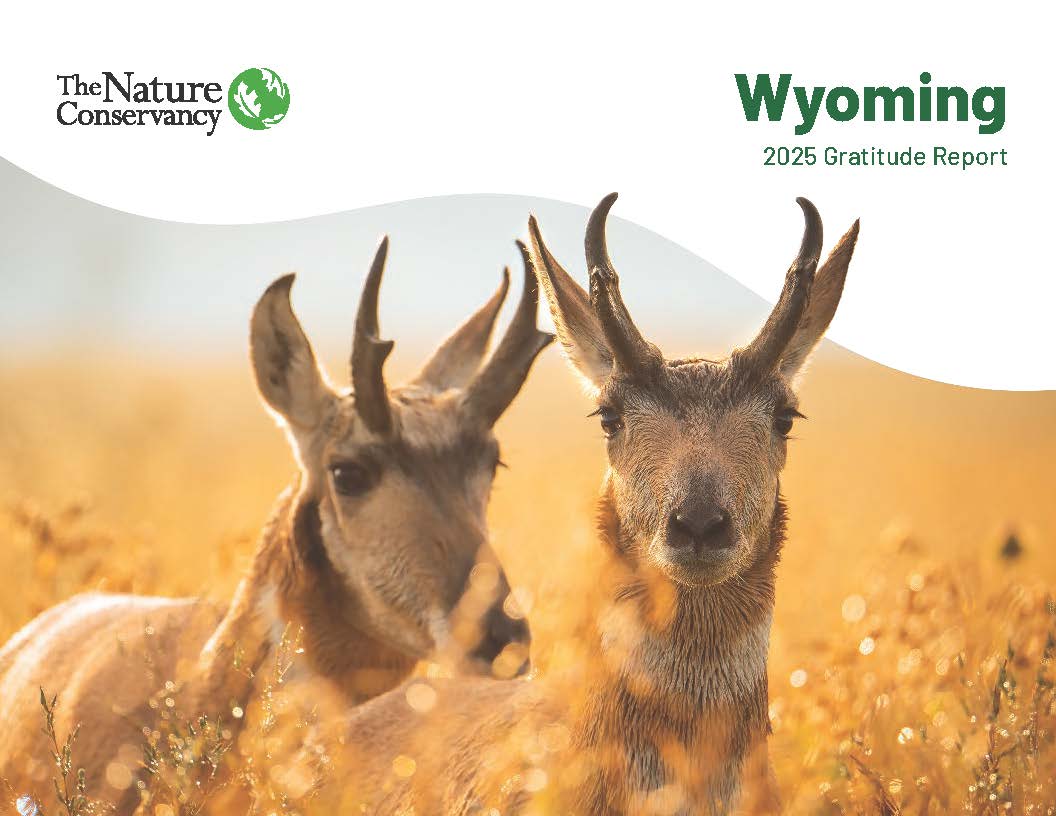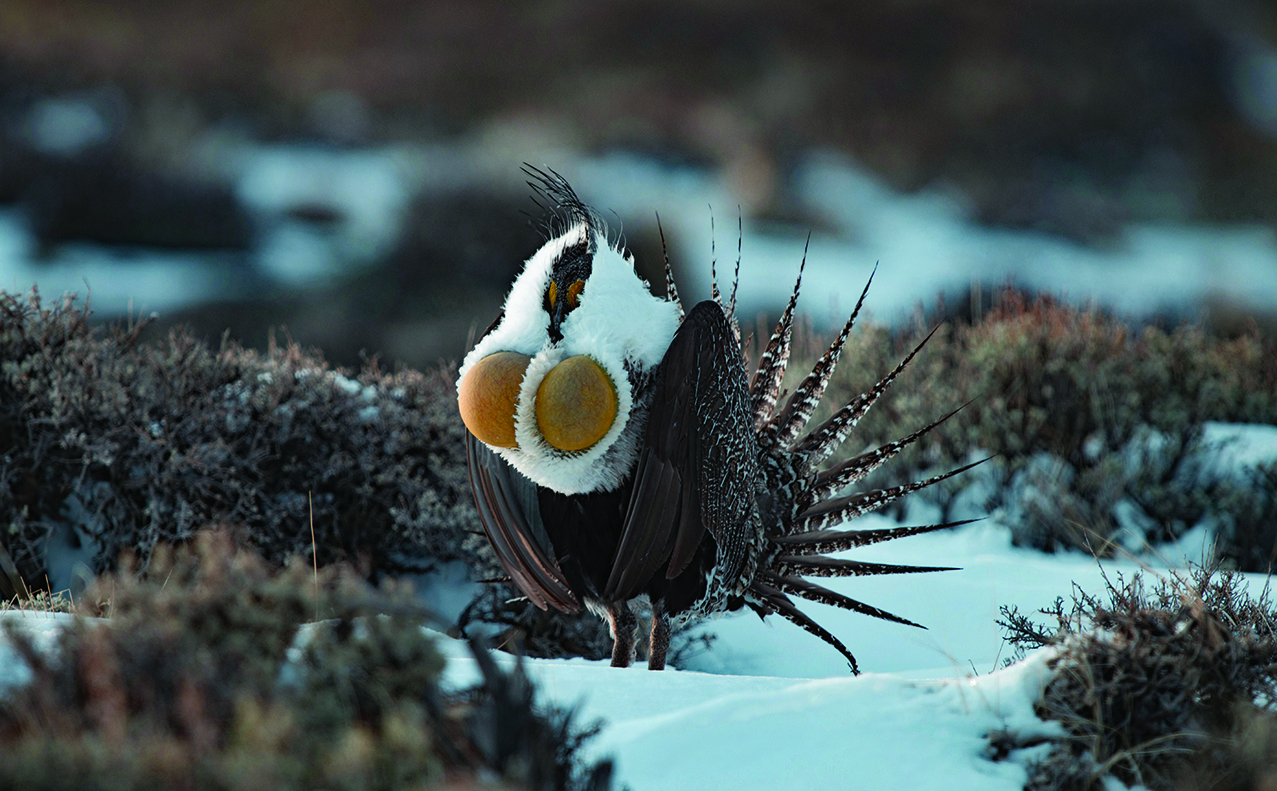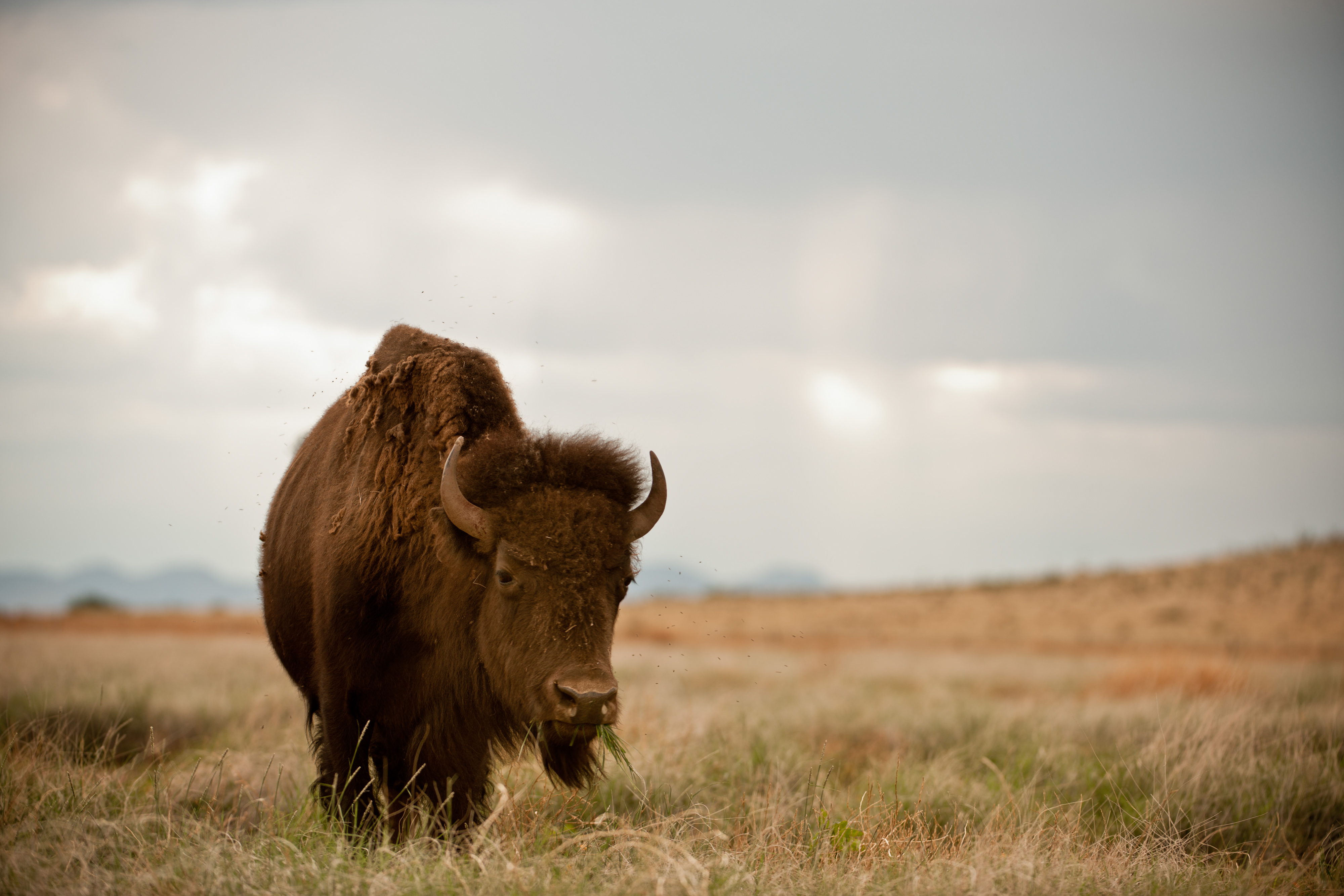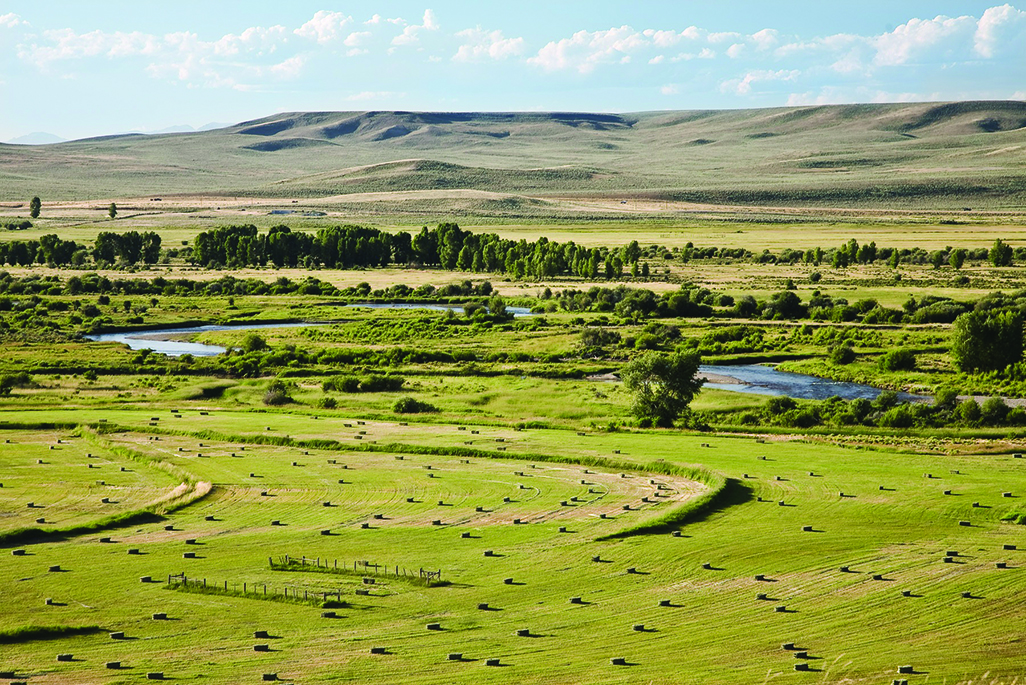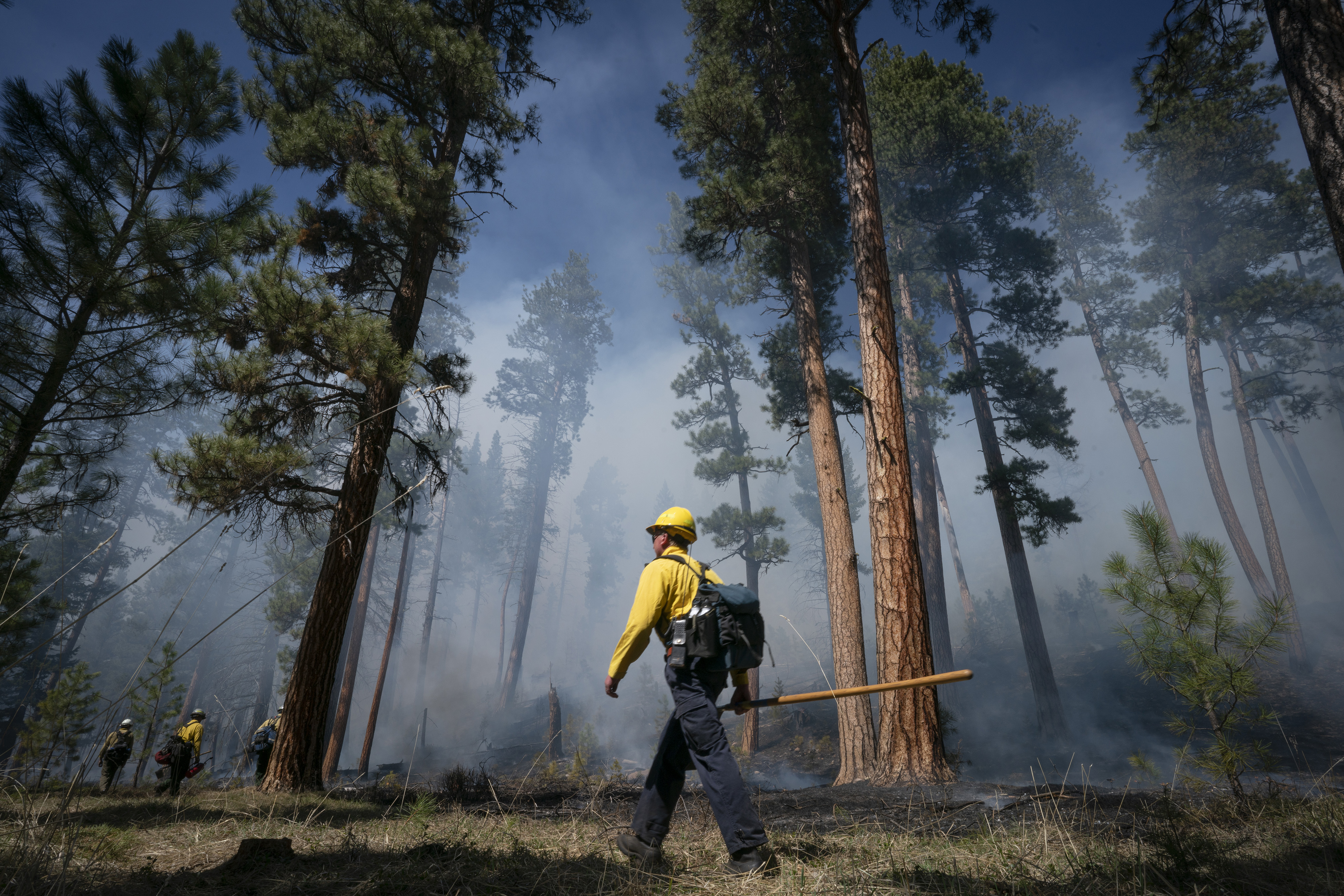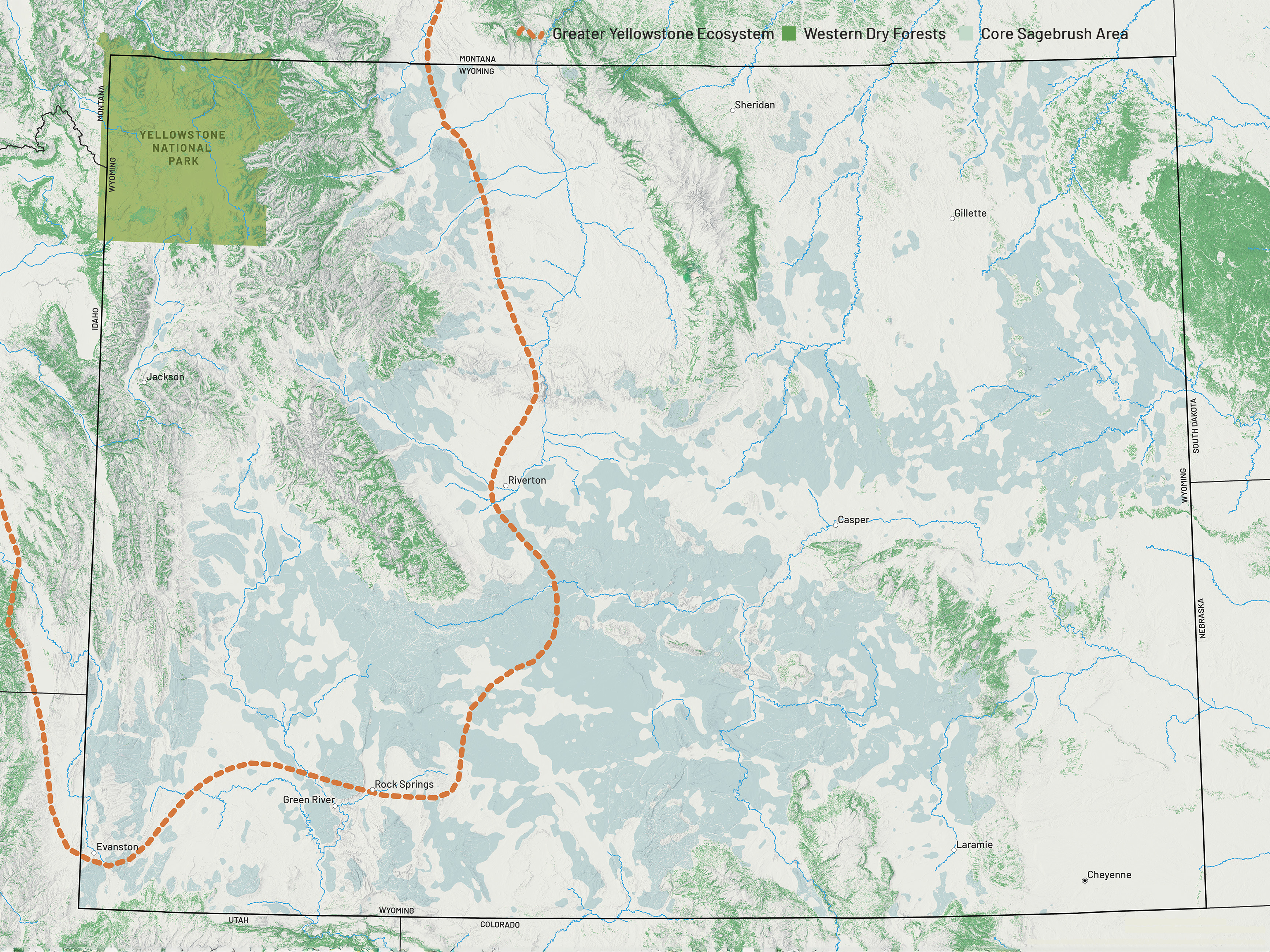
Wyoming Annual Report 2025
Read about our achievements over the past year—for nature and people.
Download
Your support creates large-scale, lasting benefits for wild and working lands across Wyoming.
DownloadQuote: Hayley Mortimer
From the bottom of my heart, thank you for all you do to conserve Wyoming. Your impact ripples far beyond our state’s borders—across the West and across generations. And that gives me a great deal of hope.
Inside the Downloadable Report
From the Director
Hayley Mortimer shares about her year and hope for the future.
Crossing to Safety
An iconic pronghorn migration gets an assist from science.
Holding the Line on Cheatgrass
Targeting invasive species protects Greater Yellowstone wildlife.
Recharging the Colorado River Basin, One Wet Meadow at a Time
Rocky structures trap water in low spots throughout the sagebrush scrubland, slowing runoff and erosion while allowing water to replenish underground aquifers.
Crow Youth on a Quest
Indigenous youth programming led by Noel Two Leggins at TNC’s Tensleep Preserve.
Capturing Carbon from the Air
New white paper from TNC outlines the technology and more.
Where We Work
The Nature Conservancy works across Wyoming to ensure that people and nature thrive. Your support creates large-scale, lasting benefits for wild and working lands in the Greater Yellowstone Ecosystem, the Colorado River Basin, the Sagebrush Sea, Western dry forests and grasslands of the Great Plains.
Greater Yellowstone Ecosystem
Conserving connected lands and waters so Wyoming’s iconic wildlife can thrive

Our future depends on nature and on you.
In Wyoming, we are united by a powerful truth: nature is the foundation of our way of life. This common ground has enabled vibrant communities, generations old, to strengthen our economy through agriculture and energy production while conserving the state’s world-class big-game migrations and irreplaceable landscapes and waters.

